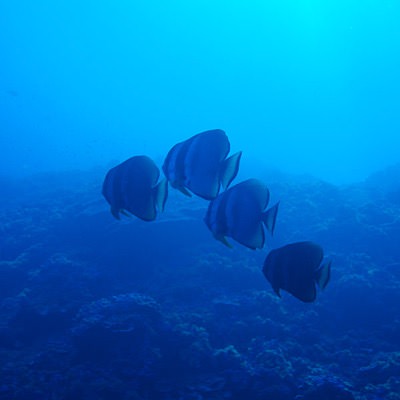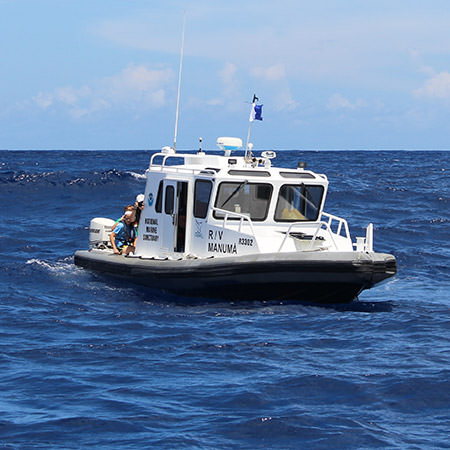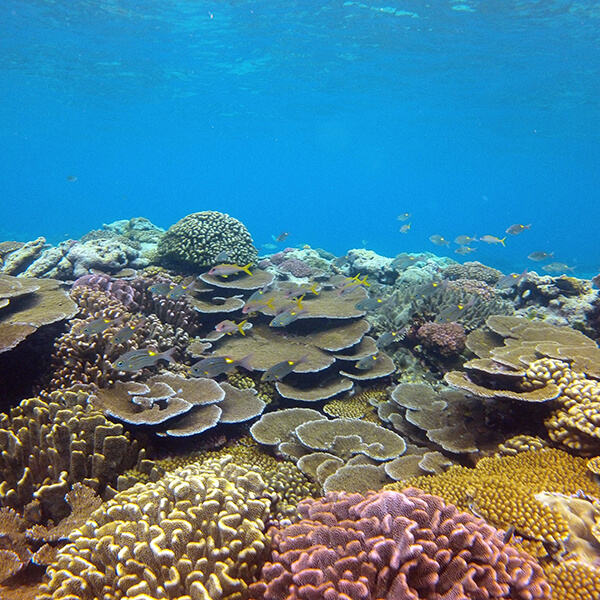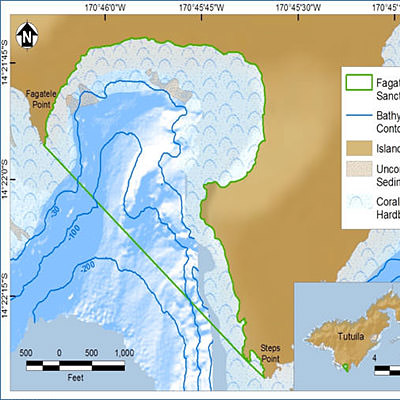About the sanctuary
National Marine Sanctuary of American Samoa is one of the federally-designated underwater areas protected by NOAA's Office of National Marine Sanctuaries. Of all the areas in the National Marine Sanctuary System, the American Samoa sanctuary is the most remote and is thought to support the greatest diversity of marine life.
The sanctuary comprises six protected areas, covering 13,581 square miles of nearshore coral reef and offshore open ocean waters across the Samoan Archipelago.
Today, National Marine Sanctuary of American Samoa is the largest national marine sanctuary in the National Marine Sanctuary System. Originally, though, it was the smallest: in 1986, NOAA established the sanctuary to protect and preserve the 0.25 square miles of coral reef ecosystem within Fagatele Bay. In 2012, NOAA expanded the sanctuary to include Fagalua and Fogama`a (the next bay east of Fagatele) on Tutuila Island, as well as areas at Aunu`u, Ta`u, and Swains islands, and a marine protected area at Rose Atoll (which was named Muliāva as it is known by the Manu`a residents) including nearby Vailulu`u Seamount.





